
In the works of one of the greatest landscape painters in the history of world art, Jacob van Reisdahl, Dutch landscape painting reaches the heights of realistic craftsmanship.
Reisdal’s significance for artistic culture lies in the fact that he enriched visual art with a landscape in which feelings and thoughts found by man when communicating with nature found a way out – a dramatic, philosophical, and romantically agitated landscape.
Unlike most Dutch painters depicting light or plain dune landscapes with majestic calm waters and peaceful villages along the banks, Reisdal prefers the forest, with its deep contrasts of light and shadow, stormy waterfalls, ancient ruins on the hilltops, desolation of cemeteries. In his paintings, the artist reflects on the endless running of time, on the withering and revival of nature, on the transience of human life.
But Reisdal would not be a true Dutchman if, along with a wooded Holland, it would not have shown its coastal part, washed by the northern sea, fanned by a moist sea wind. Such a landscape is depicted in the picture “Sea Coast”: a high sky covered with cumulus clouds, and a calm sea with waves lazily rolling on the shore, sailing ships enlivening the water surface, and festively dressed people on the coast.
However, behind this seeming silence and serenity, the lush elements of water and wind are discerned. Between the thickening clouds, only in some places the sun breaks, its rays fall on the sand and water with restless spots, the sea is darkened and something ominous is felt in the landscape.
The painting “Seashore” belongs to the late period of the artist. It was performed, apparently, in the mid-1670s. This is indicated above all by the cold coloring and costumes of the people, written not by Reisdal himself, but by Rotterdam painter Gerard fan Battem who collaborated with him during these years.
The painting “Sea Coast” entered the Hermitage from the Marble Palace in Petrograd in 1919.
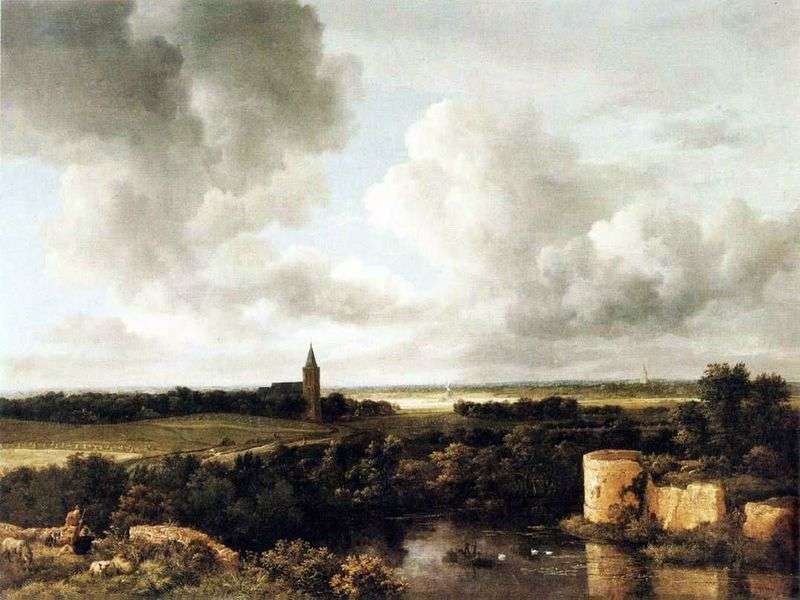 Landscape with castle ruins and church by Jacob van Reisdal
Landscape with castle ruins and church by Jacob van Reisdal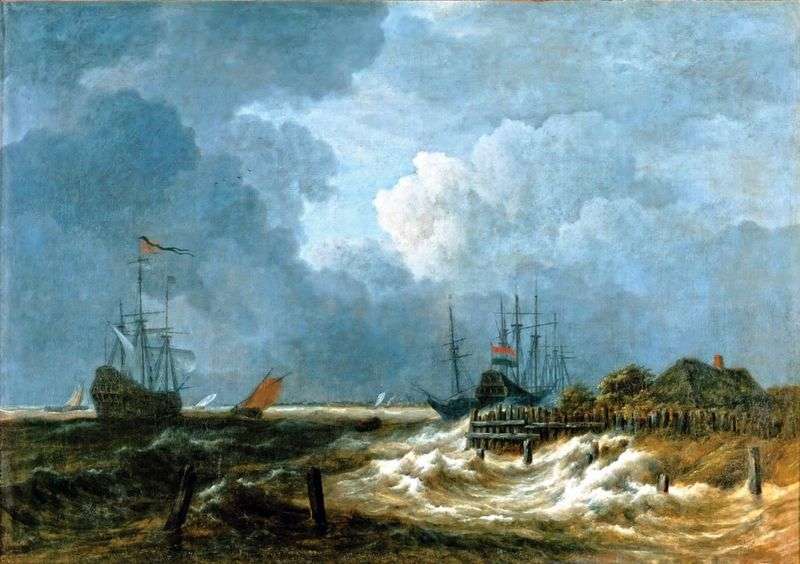 Breakwater by Jacob van Ruysdal
Breakwater by Jacob van Ruysdal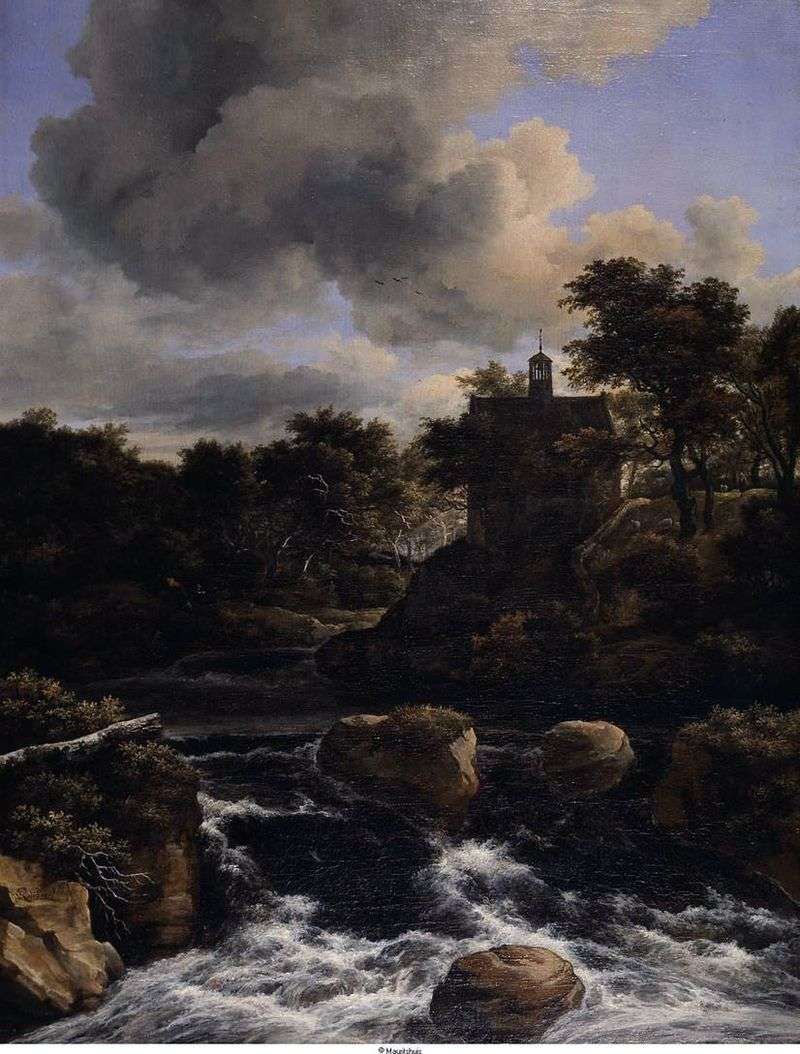 Waterfall in the forest by Jacob van Ruisdal
Waterfall in the forest by Jacob van Ruisdal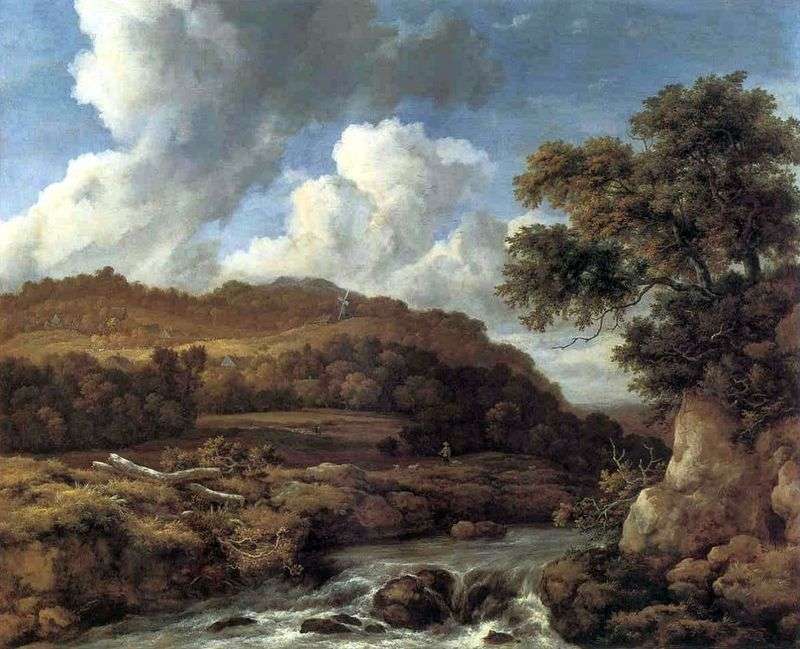 Landscape with wooded hills and stream by Jacob van Ruisdael
Landscape with wooded hills and stream by Jacob van Ruisdael Dune Road by Jacob van Ruisdal
Dune Road by Jacob van Ruisdal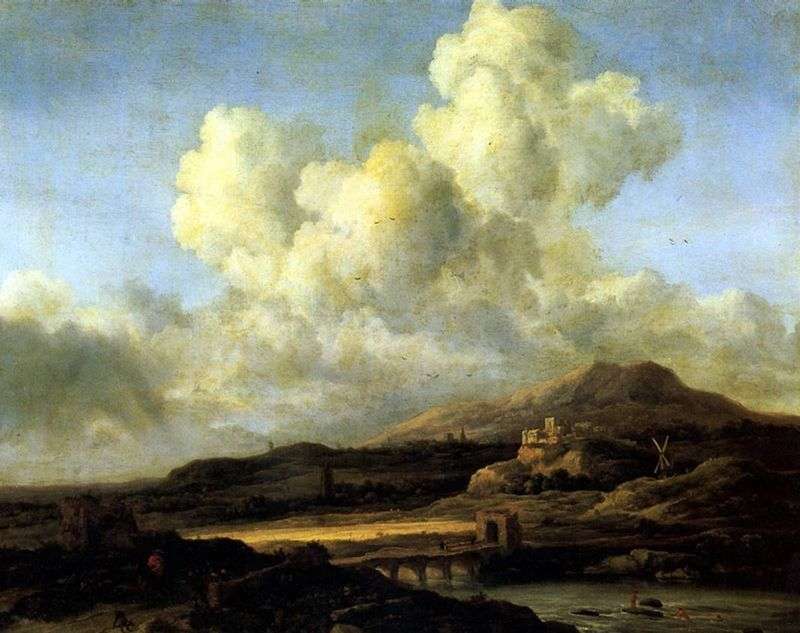 Ray of Sun by Jacob van Ruysdal
Ray of Sun by Jacob van Ruysdal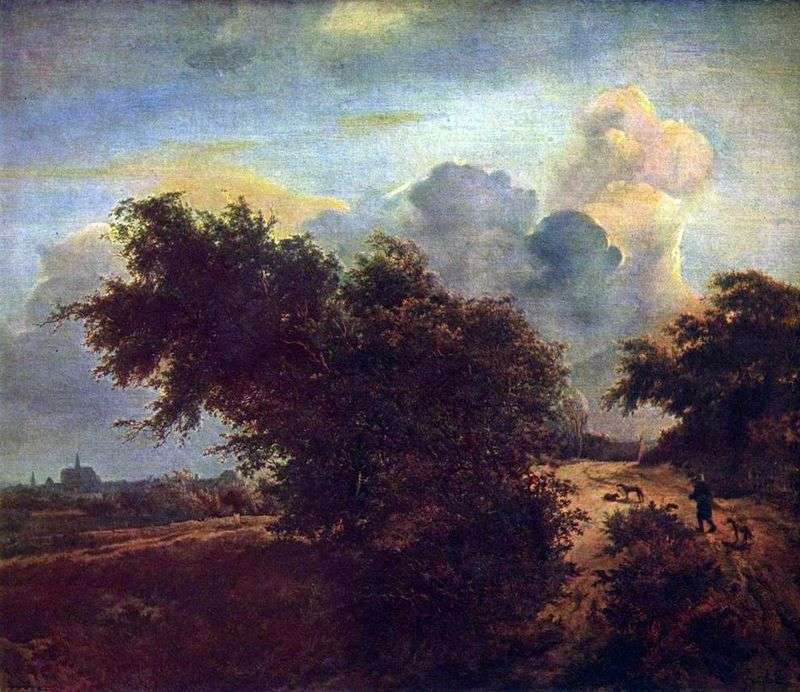 Landscape in the dunes with shrubs by Jacob van Reisdal
Landscape in the dunes with shrubs by Jacob van Reisdal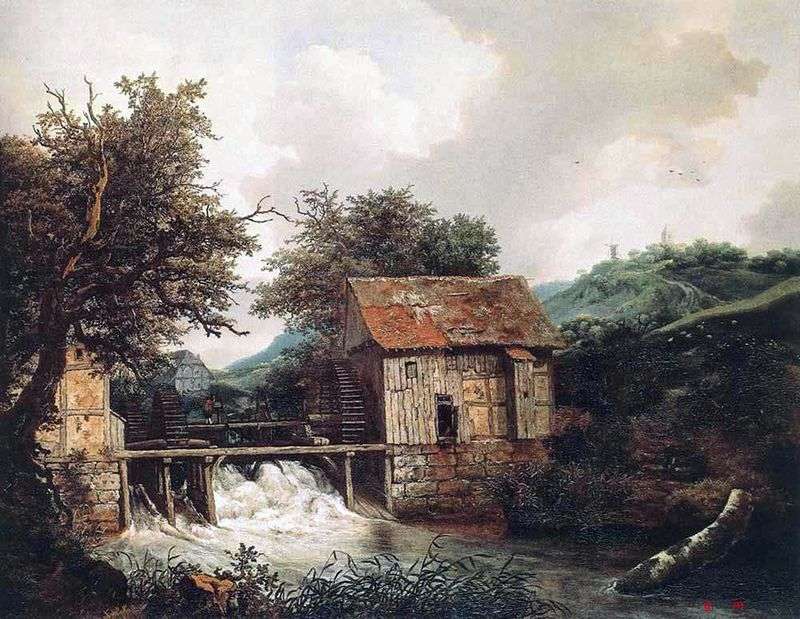 Two Mills by Jacob van Reisdal
Two Mills by Jacob van Reisdal